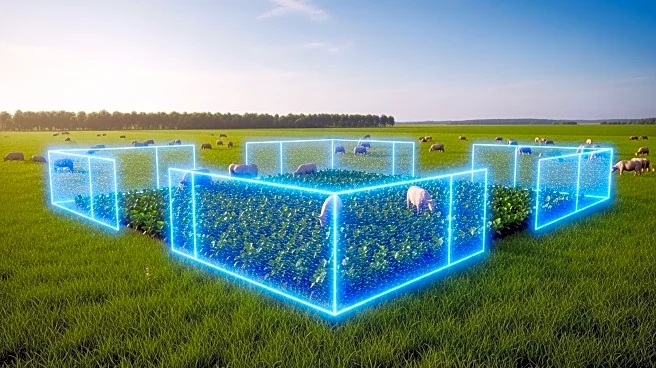What is the story about?
What's Happening?
Farm management and precision agriculture software startups have led agrifoodtech funding in the third quarter of 2025, largely due to significant investments in virtual fencing technology. Halter, a New Zealand-based company, raised $100 million for its smart collars designed for livestock management, allowing ranchers to manage herds without physical fencing. Another virtual fencing company, Nofence, secured $35 million shortly after Halter's funding round. Despite these successes, overall agrifoodtech investment has decreased by 32% compared to the previous quarter, totaling $1.7 billion. This marks a nearly 50% drop from the third quarter of 2024. The number of deals has also declined, with only 195 deals recorded in 2025, indicating a challenging environment for agrifoodtech investments.
Why It's Important?
The advancements in virtual fencing technology, as demonstrated by Halter and Nofence, represent a significant shift in livestock management practices. These technologies offer a cost-effective and efficient alternative to traditional fencing, potentially transforming the agricultural industry. The substantial funding secured by these companies highlights investor interest in innovative solutions that address practical challenges in agriculture. However, the overall decline in agrifoodtech funding suggests broader economic pressures and a cautious investment climate. The success of virtual fencing startups may encourage further investment in precision agriculture technologies, which could lead to increased efficiency and sustainability in farming practices.
What's Next?
As virtual fencing technology gains traction, it is likely to attract more interest from investors and agricultural stakeholders. The success of Halter and Nofence may prompt other companies to explore similar innovations, potentially leading to increased competition and further advancements in livestock management solutions. Additionally, the broader agrifoodtech sector may see a shift in focus towards technologies that offer tangible benefits and cost savings. Stakeholders in the agricultural industry, including farmers and ranchers, may increasingly adopt these technologies to improve operational efficiency and reduce costs.
Beyond the Headlines
The rise of virtual fencing technology raises important ethical and environmental considerations. By reducing the need for physical barriers, these technologies could minimize land disruption and promote more sustainable land use practices. Furthermore, the integration of AI and machine learning in livestock management may lead to improved animal welfare through better monitoring and management of herds. As these technologies evolve, they may also influence regulatory frameworks and industry standards, necessitating discussions on data privacy and the ethical use of AI in agriculture.
AI Generated Content
Do you find this article useful?
















